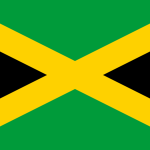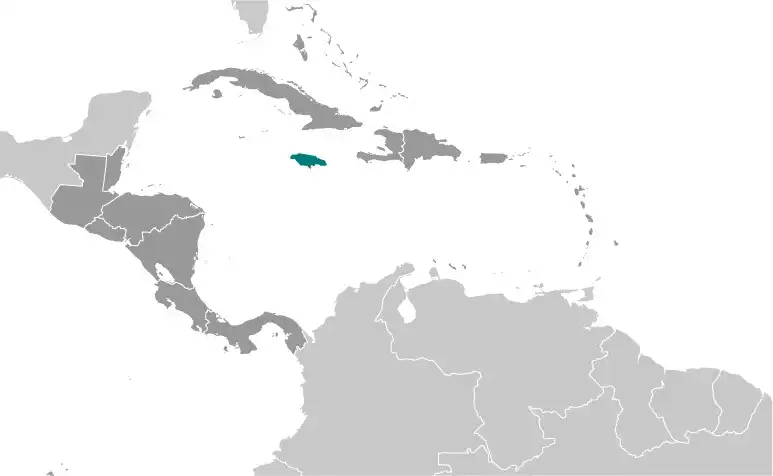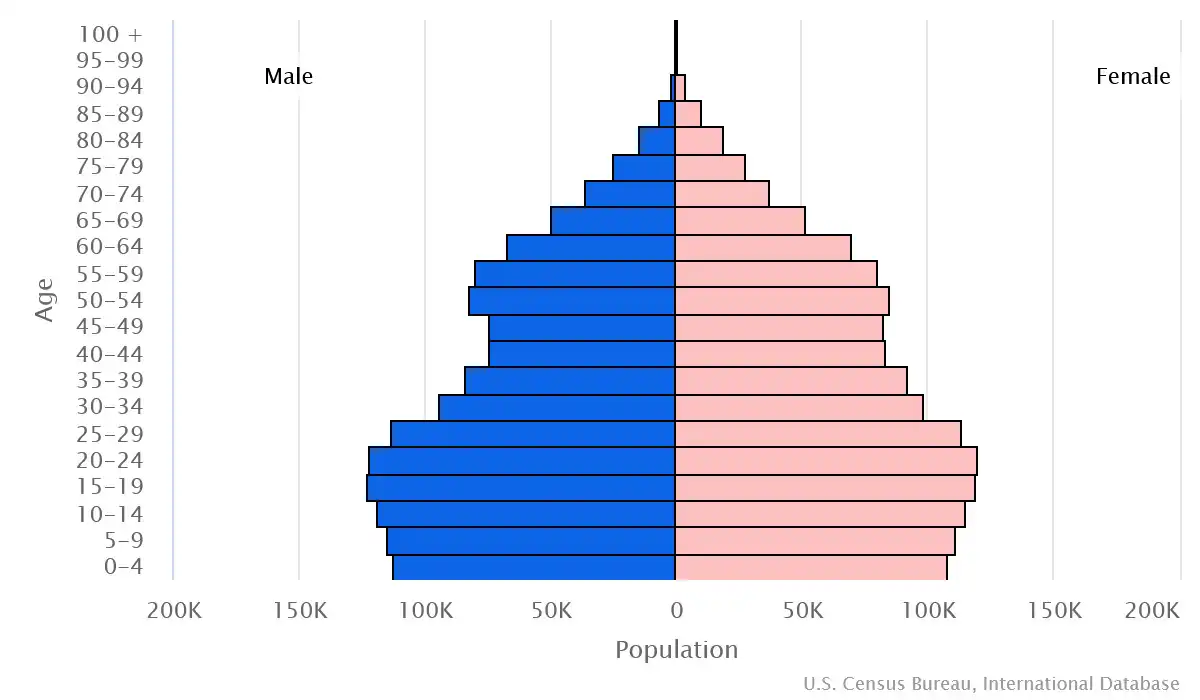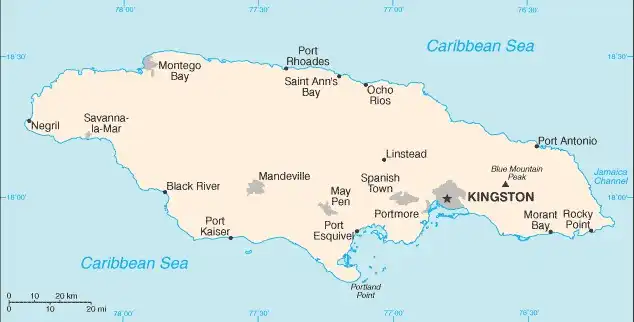
Jamaica
Veröffentlicht: 19. June 2022 - Letztes Update: 28. February 2025
Country Data Dashboard

Population
2,823,713
Growth: 0.1% (2024 est.)
GDP
$19.423 billion
(2023 est.)
Area
10,991 sq km
| Government type: | parliamentary democracy (Parliament) under a constitutional monarchy; a Commonwealth realm |
| Capital: | Kingston |
| Languages: | English, Jamaican patois |
People & Society
Ethnicity (2011 est.)
Religion (2011 est.)
Age structure

Economy
Economic overview
upper-middle-income Caribbean island economy; key agriculture and tourism sectors; high crime, youth unemployment, and poverty; susceptible to natural disasters and global commodity price shocks; progress in reducing public debt and moderating inflation within target range
Real GDP (purchasing power parity) in Billion $
Real GDP per capita in $
Exports & Imports in billion $
Top 5 Import Partner in 2022 (63%)
Top 5 Import Commodities in 2022
- refined petroleum ⛽
- crude petroleum 🛢️
- natural gas 💨
- cars 🚗
- plastic products ♻️
Top 5 Export Partner in 2022 (63%)
Top 5 Export Commodities in 2022
- refined petroleum ⛽
- natural gas 💨
- aluminum oxide 🪙
- liquor 🍷
- aluminum ore 🪙
Geography
Map

Area
Natural resources
- bauxite 🪨
- alumina 🪶
- gypsum ⚪🪨
- limestone 🪨
Climate
tropical; hot, humid; temperate interior
Historical Background Information
Europeans first saw Jamaica when Christopher COLUMBUS arrived in 1494, and the Spanish settled the island early in the 16th century. The Native Taino, who had inhabited Jamaica for centuries, were gradually exterminated and replaced with African slaves. England seized the island in 1655 and established a plantation economy based on sugar, cocoa, and coffee. The abolition of slavery in 1834 freed a quarter-million slaves, many of whom became small farmers. Jamaica gradually increased its independence from Britain. In 1958, it joined other British Caribbean colonies in forming the Federation of the West Indies. Jamaica withdrew from the Federation in 1961 and gained full independence in 1962. Deteriorating economic conditions during the 1970s led to recurring violence as rival gangs affiliated with the major political parties evolved into powerful organized crime networks involved in international drug smuggling and money laundering. Violent crime, drug trafficking, corruption, and poverty pose significant challenges to the government today. Nonetheless, many rural and resort areas remain relatively safe and contribute substantially to the economy.
